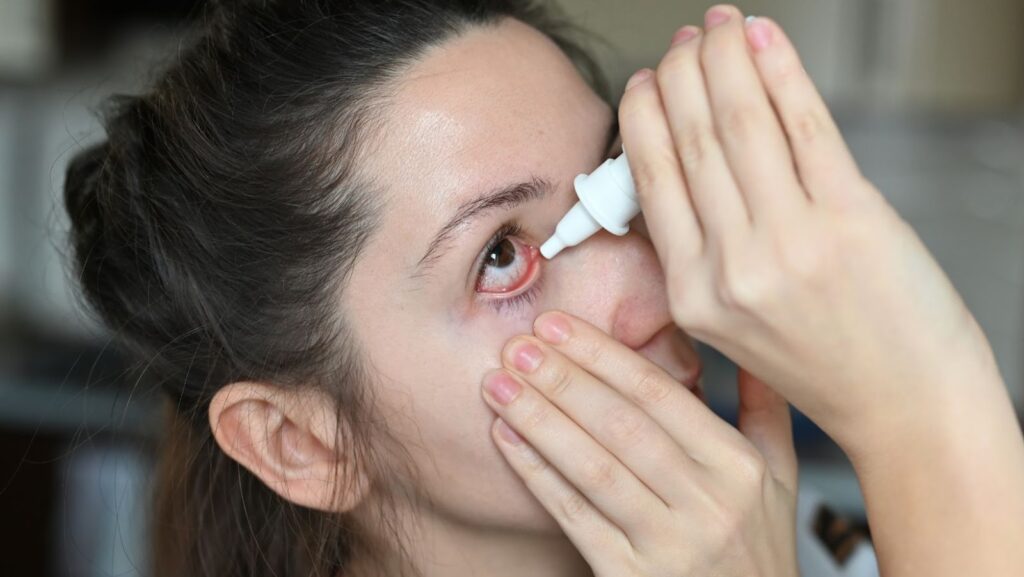
Infections, allergies, dry eye syndrome, blepharitis, corneal abrasions, foreign objects in the eye, and glaucoma are conditions that can cause red eyes. If you have red eyes, you should see an eye doctor to determine the cause and receive proper treatment. Self-treatment with over-the-counter eye drops or other remedies may not address the underlying cause of Beverly Hills red eyes and may worsen the situation.
The evaluation and diagnosis of red eyes typically involve the following steps:
- Patient History: Your eye doctor will ask you about your symptoms, including how long you have had red eyes and other associated symptoms such as itching, discharge, pain, or vision changes.
- Physical Examination: The doctor will perform a thorough review of your eyes, including checking your eyelids, lashes, and the front and back of your eyes. They may use a bright light to examine the inside of your eyes and a magnifying lens to look for signs of infection or damage.
- Additional Tests: Depending on the suspected cause of your red eyes, your eye doctor may recommend further tests such as a visual acuity test, a visual field test, a tonometry test to measure the pressure in your eyes, or imaging tests such as an X-ray or MRI.

Red eyes can be a symptom of various underlying medical conditions. Common causes of red eyes include:
- Conjunctivitis is an infection or allergy that causes inflammation of the transparent membrane covering the eye’s white part.
- Blepharitis: An inflammation of the eyelids that can cause red, swollen, and itchy eyes.
- Allergic reactions can cause red, itchy, and teary eyes.
- Corneal abrasion: A scratch on the eye’s clear front surface that can cause redness and pain.
- Foreign object in the eye: A foreign object can cause redness and discomfort.
- Glaucoma: A condition that causes increased pressure within the eye, leading to redness and vision loss.
Treatment Options for Red Eyes
The treatment options for red eyes depend on the condition’s underlying cause. Some common treatments include:
- Eye Drops: Over-the-counter or prescription eye drops can help relieve redness, itching, and swelling associated with allergies or eye infections.
- Antibiotics: Antibiotic eye drops or ointments can help clear up infections caused by bacteria.
- Artificial Tears: Artificial tears can help relieve dryness and redness associated with dry eye syndrome.
- Warm Compresses: Warm compresses can help relieve redness and discomfort associated with blepharitis.
- Allergy Medications: Antihistamines, decongestants, or other allergy medications can help relieve symptoms associated with allergies.
- Steroid Eye Drops: Steroid eye drops can help reduce inflammation associated with certain eye conditions.
- Surgery: In severe cases, surgery may be necessary to treat certain eye conditions, such as glaucoma.

Preventing red eyes involves maintaining good eye health and reducing exposure to irritants and other factors that can cause redness and eye strain. This includes reducing screen time, getting adequate sleep, eating a healthy diet, managing stress, avoiding rubbing your eyes, avoiding extreme temperatures, and being mindful of the length of time you wear contact lenses. Contact your eye specialist at Beverly Hills Optometry: Advanced Dry Eye Center if you have red eyes.












